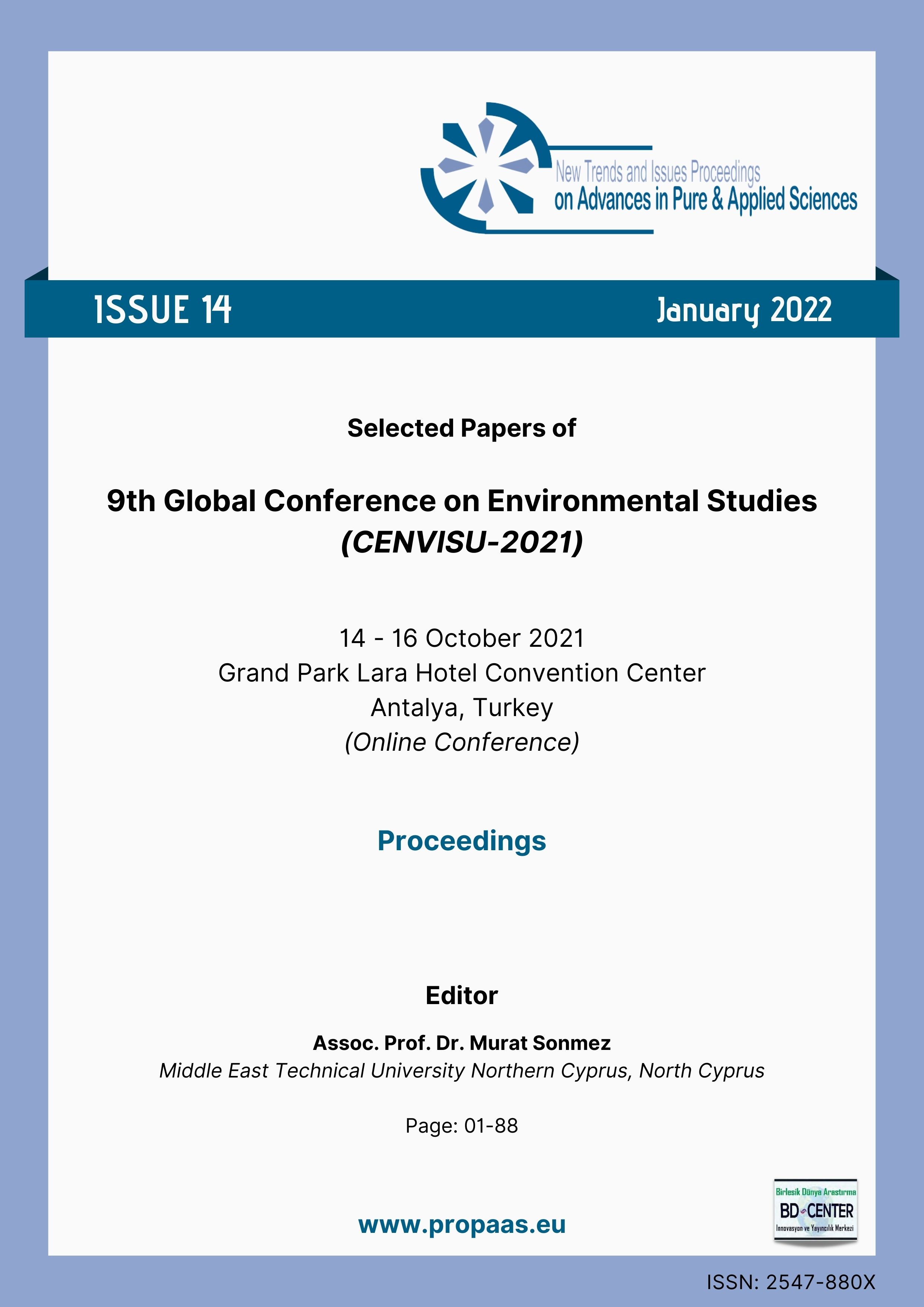Changes in Cadmium (Cd) concentrations in some plants depending on traffic density
Main Article Content
Abstract
Cadmium (Cd) is an element that is toxic to living things at very low doses and it is one of the most important pollutants for the environment. Also, it is classified as a Type 1 carcinogen, and it has a long biological half-life so it is of great importance to monitor the change of Cd concentration in air. This study aimed to determine the variation of Cd concentrations in some plants depending on plant species, organs, and traffic density, evaluated to determine the most suitable species and organ. It can be used as a biomonitor in monitoring the change of Cd concentration. The scope of the study covered determining the variation of Cd concentration in organs of four different plants, Aesculus hippocastanum, Tilia tomentosa, Catalpa bignoides, and Ligustrum vulgare, respectively. These species were investigated depending on traffic density. From the result of the study, it was determined that Aesculus hippocastanum and Tilia tomentosa were the most suitable species to be used as biomonitors of Cd among the species.
Keywords: Air pollution; Biomonitor; Cadmium; Heavy metal; Traffic emissions.
Downloads
Article Details

This work is licensed under a Creative Commons Attribution 4.0 International License.
Authors who publish with this journal agree to the following terms:- Authors retain copyright and grant the journal right of first publication with the work simultaneously licensed under a Creative Commons Attribution License that allows others to share the work with an acknowledgement of the work's authorship and initial publication in this journal.
- Authors are able to enter into separate, additional contractual arrangements for the non-exclusive distribution of the journal's published version of the work (e.g., post it to an institutional repository or publish it in a book), with an acknowledgement of its initial publication in this journal.
- Authors are permitted and encouraged to post their work online (e.g., in institutional repositories or on their website) prior to and during the submission process, as it can lead to productive exchanges, as well as earlier and greater citation of published work (See The Effect of Open Access).
